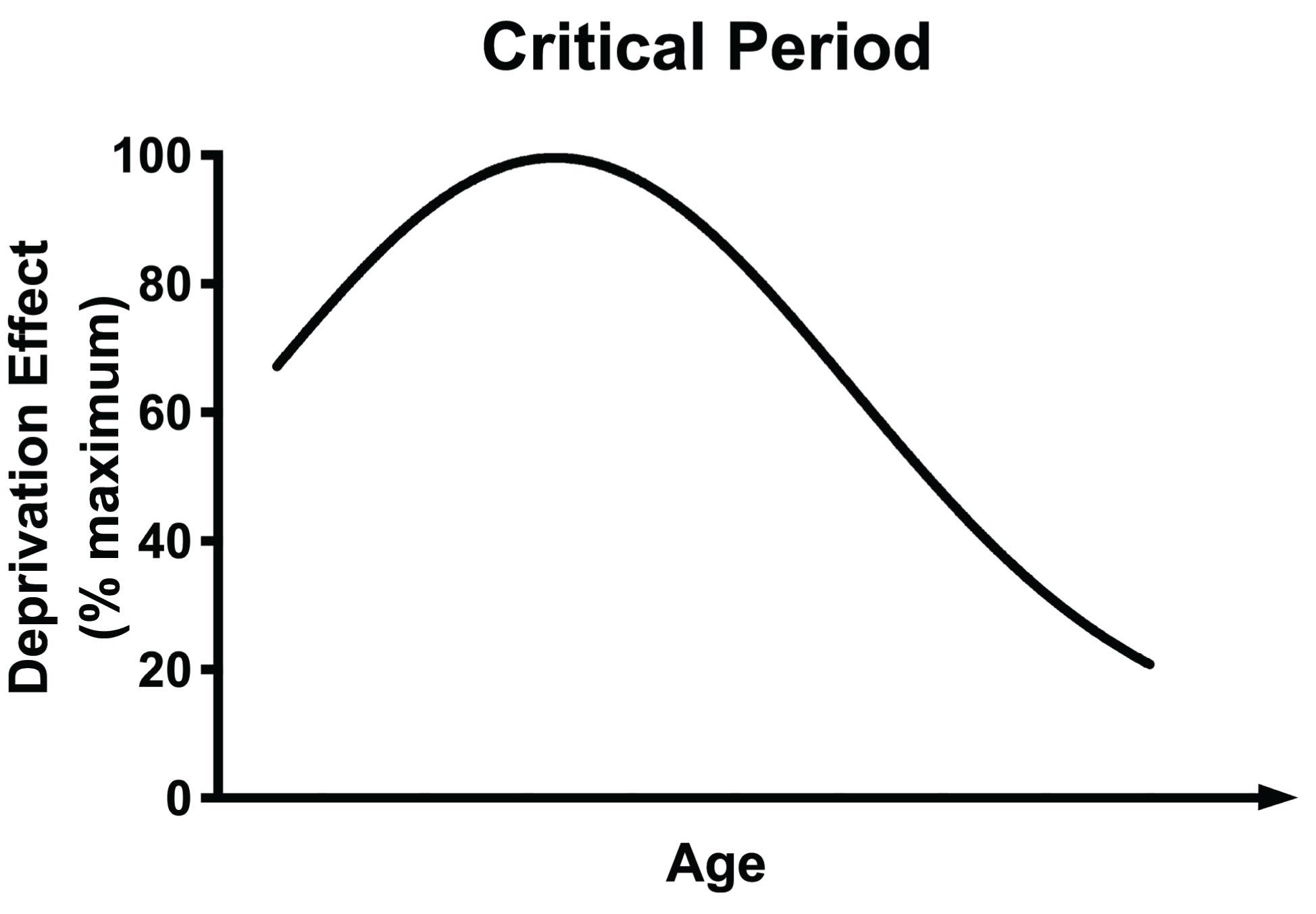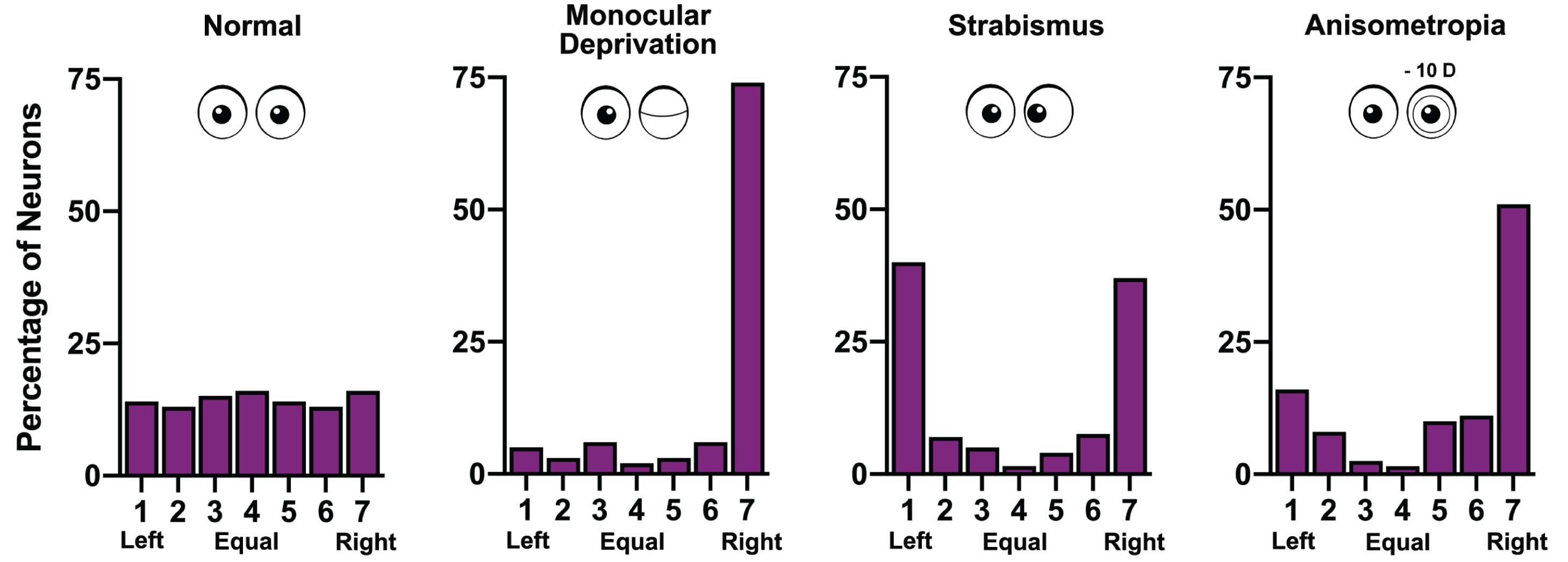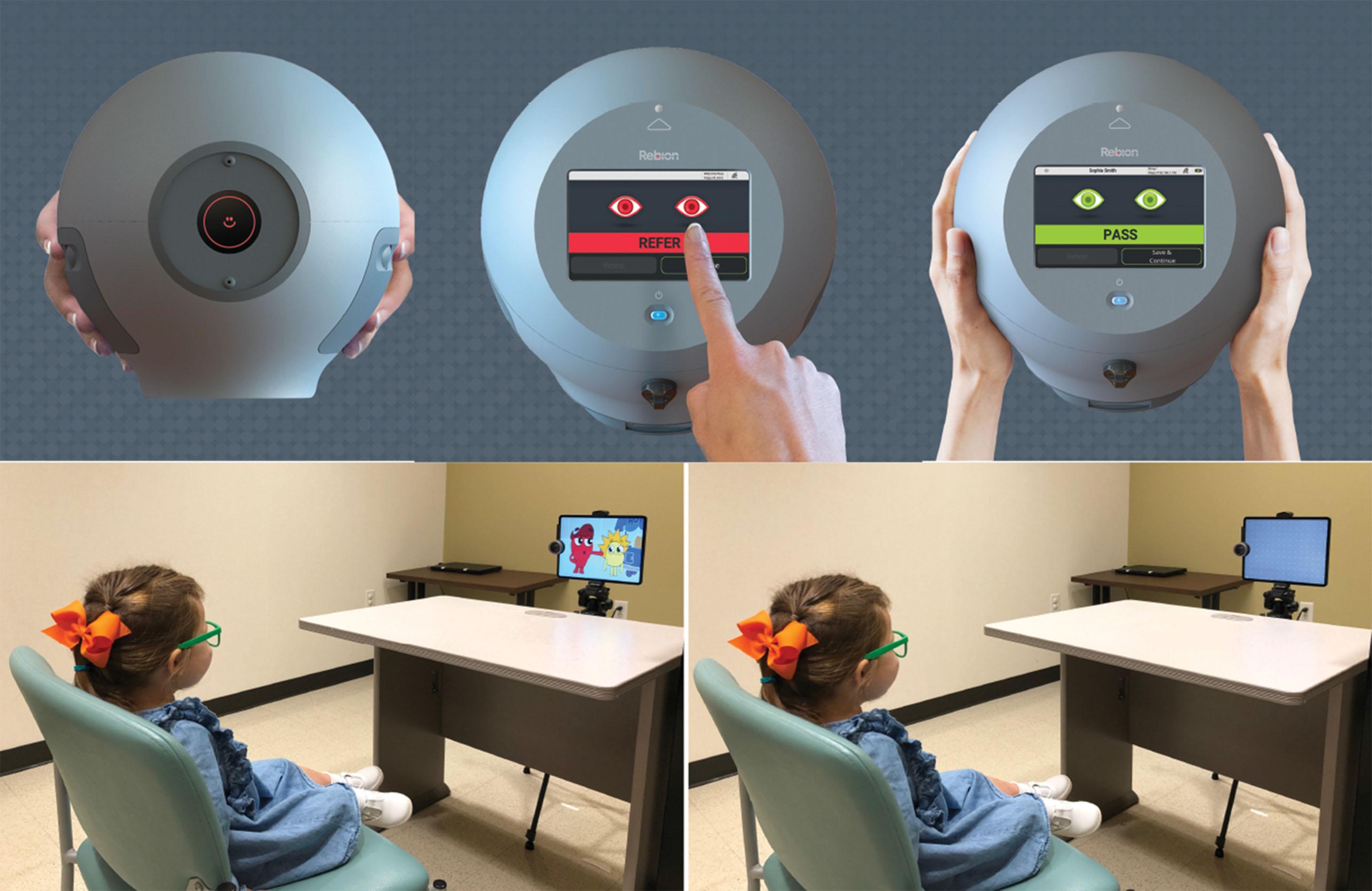Physical Address
304 North Cardinal St.
Dorchester Center, MA 02124
Amblyopia is diminished vision that results from discordant visual experience during the first years of life when the visual pathways are within the early stages of maturation.
Reduced visual acuity accompanied by an amblyogenic factor, most commonly strabismus or anisometropia.
Suppression of the amblyopic eye.
Reduced or nil stereoacuity.
Sensory: reduced contrast sensitivity, altered perception of alignment (vernier acuity), deficits in motion perception, abnormal contour integration, and fellow-eye perceptual deficits.
Ocular motor: poor accommodative accuracy, fixation instability, increased and variable saccadic latency, delayed initiation of smooth pursuit, periods of slow pursuit followed by corrective “catch-up” saccades, and vergence instability.
Neural: disruption of neural development within mostly cortical areas that alters the spatial precision of connections.
Functional: Impaired motor skills, slower reading speed, increased risk for injuries and falls, lower self-perception and quality of life, and limitation of career options.
Diminished neural representation of the affected eye and poor representation of binocularly driven neurons in the primary visual cortex.
Perturbations of neural function extend to higher visual areas that exhibit noisy spiking and spatially disordered receptive fields.
Clinically, amblyopia is identified when reduced visual acuity is accompanied by an amblyogenic factor, most commonly strabismus or anisometropia, and no other vision-threatening eye conditions. The combined prevalence of strabismic and anisometropic amblyopia has been evaluated in recent epidemiological studies that have revealed a mean prevalence of 2.4%; that is, amblyopia affects approximately 22 million children worldwide who are under the age of 7 years. Deprivation amblyopia, which usually results from congenital or infantile cataract, is much less common, with the prevalence of visually significant cataract at 0.02%, and is responsible for 5%–20% of childhood blindness. Although less common, deprivation amblyopia is typically more severe and recalcitrant to treatment. Amblyopia is the leading cause of monocular visual impairment in adults in the United States.
Although the visual acuity deficit in the presence of an amblyogenic factor is a defining characteristic of amblyopia, early discordant visual experience can cause a broad range of sensory deficits, including suppression, reduced or nil stereoacuity, reduced contrast sensitivity, altered perception of alignment (vernier acuity), deficits in motion perception, abnormal contour integration, and fellow eye deficits. Ocular motor deficits that can result from early discordant visual experience include poor accommodative accuracy, fixation instability, increased and variable saccadic latency, delayed initiation of smooth pursuit and periods of slow pursuit followed by corrective “catch-up” saccades, and vergence instability. Many of the sensory and ocular motor deficits associated with amblyopia are not secondary to the visual acuity deficit but instead arise as additional consequences of early discordant visual experience. As a result, they may persist even after the visual acuity deficit is successfully treated. These sensory and ocular motor deficits have knock-on effects (potential negative associations) on the performance activities of daily life, as discussed later in this chapter.
Development of the visual system is initiated through a prenatal sequence of patterned gene expression that interacts with intrinsically driven activity to produce rudimentary neural circuits. Visual experience early in postnatal life refines this nascent circuitry in an effort to optimize the function of the visual system and produce normal perception. The important synergy that exists between visual experience and neural development is facilitated by a high capacity for neural plasticity that occurs only early in postnatal life during the so-called critical period ( Fig. 11.11.1 ). Although the critical period is a formative time in normal neural development, it also is a time of vulnerability during which impressionable neural circuits can be misguided by conditions that obstruct normal visual experience.

Our knowledge of the pathophysiology of amblyopia largely derives from studies that use cats and monkeys to model the condition. This is exemplified by the work of David Hubel and Torsten Wiesel, who were awarded the 1981 Nobel Prize in Physiology or Medicine for research on how the brain processes visual information. They demonstrated that closure of the lids of one eye early in postnatal life led to profound changes in the structure and function of neurons within the visual system. Whereas in the primary visual cortex (V1) of normal animals an equal number of neurons was responsive to stimulation of either eye, with most cells responding to both ( Fig. 11.11.2 ), most neurons became responsive only to simulation of the nondeprived eye following the occlusion of one eye. It is notable that monocular visual deprivation alters the normal pattern of neural connections but does not reduce the number of neurons. The shift away from normal and balanced ocular dominance is the product of competition in which less active inputs from the deprived eye cannot compete with the more active inputs serving the nondeprived eye. The result of this competitive disadvantage is a weakening and eventual loss of excitatory synaptic connections serving the deprived eye—it becomes disconnected from the visual cortex. The reduction in the number of deprived-eye connections manifests as a conspicuous atrophy of deprived cells within the lateral geniculate nucleus, whose inputs to the visual cortex are the subject of competition. An important characteristic of the neural consequences of monocular visual deprivation is that the magnitude of pathophysiology relates to the age at which the deprivation occurs. Visual deprivation initiated at progressively later ages in development produces diminishing effects until, at older ages, even long durations of deprivation have a negligible impact on the structure and function of neurons. In other words, the low capacity for plasticity beyond the critical period protects visual neural circuits from deprivation-induced changes, even if the deprivation lasts for many months. Recovery from the detrimental neural consequences of monocular visual deprivation likewise adheres to a critical period, limiting remediation at older ages when the plasticity capacity is low.

Notwithstanding the important mechanistic insights that studies employing monocular deprivation have provided toward our understanding of the rootedness of amblyopia, this type of deprivation produces an uncommon and extreme form of amblyopia that results from a nearly complete neural disconnection not observed with more familiar forms of amblyopia. Experimentally induced strabismus, for instance, does not result in a wholesale disconnection of the deviating eye but rather significantly reduces the number of neurons in the visual cortex that connect to and are driven by both eyes (see Fig. 11.11.2 ). Strabismus-induced rewiring of neural connections away from the normal binocular template produces a visual system with neurons that mostly connect to one or the other eye, but not to both. Anisometropic amblyopia likewise appears not to mirror the extreme rearrangement of cortical ocular dominance as seen after monocular visual deprivation, but it does produce a diminished neural representation of the affected eye that accompanies a poor representation of binocularly driven neurons. Furthermore, physiological measurements of spatial resolution and contrast sensitivity from individual V1 neurons reveal significant deficits related to the amblyopic eye, and the magnitude of these deficits correlates with the depth of amblyopia. Comparisons of behaviorally measured contrast sensitivity functions across the different types of amblyopia in monkeys are in accordance with observed neural deficits in showing a reduction in spatial visual acuity for the amblyopic eye, as well as a decrease in contrast sensitivity ( Fig. 11.11.3 ).

The heavy impact of amblyogenic rearing on neural connections extends to deficits of neural processing beyond V1. Perturbations of neural function extend to visual areas such as V2, where amblyopia associates with neurons that exhibit noisy spiking and where receptive fields are spatially disordered. In fact, within area V2, the shift in ocular dominance away from the amblyopic eye in strabismic monkeys appears larger than that found in V1. Development of the middle temporal (MT) motion processing area, which in normal animals comprises mostly binocular neurons, also is altered to the extent that neurons strongly favor stimulation of the nonamblyopic eye and show compromised motion sensitivity. These and other studies examining the pathophysiology of amblyogenic rearing suggest that the biological basis of the visual disorder, at least in part, is rooted in a disruption of processes that consolidate the spatial precision of neural connections within mostly cortical areas of the visual system. Dysfunction within these areas may seed the development of a neural disorder within other brain systems, such as the sensorimotor system, which has been linked to fine motor dysfunction in children with amblyopia.
Fewer than half of children with amblyopia are identified before they reach school age. Because amblyopia is a disorder of neurodevelopment, failure to detect and remediate it with early treatment can result in irreversible vision loss. The consequences of not identifying and treating amblyopia early not only include permanently decreased visual acuity in one eye but also a risk for bilateral visual impairment if the fellow eye is injured or affected by disease later in life. Because good visual acuity in each eye and/or normal stereoacuity may determine eligibility for some careers in the military, aviation, surgery, law enforcement, and firefighting and for obtaining a commercial driver’s license, amblyopia that persists into adulthood may preclude these occupations. Screening programs for preschool children, coupled with early treatment, reduce the prevalence of amblyopia by 60% and the prevalence of severe amblyopia nearly 10-fold.
The gold standard for amblyopia screening is visual acuity testing. However, many children cannot complete a visual acuity test of each eye until they are at least 5 years old. The US Preventative Service Task Force recommends vision screening at least once for children between 3 and 5 years of age and specifically mentions automated screening devices as an appropriate technology for this age range. However, most automated screening devices are not designed to screen for amblyopia and strabismus; rather, they screen for amblyogenic risk factors, including hyperopia and anisometropia. As such, they reduce the cost-effectiveness of screening because of their high false-positive rates, which was cited by pediatricians as a major barrier to preschool vision screening. In fact, the notion of “earlier is better” has recently been called into question in light of the high rate of overreferral, which may lead to unneeded treatment, financial burden, and potential psychosocial harm.
New alternatives for early vision screening that target amblyopia directly are on the horizon. The blinq™ conducts a 2-second scan of the retina to determine whether fixation is central and steady in both eyes simultaneously ( Fig. 11.11.4 ). Amblyopia is associated with fixation instability, and the blinq™ has been shown to have 97% sensitivity in identifying amblyopia and 90% specificity, a significantly lower false-referral rate than screening for risk factors. A second device, the Objective Acuity Vision Screener, tests the visual acuity of each eye directly using a novel vanishing optotype to induce involuntary eye movements (see Fig. 11.11.4 ). Unique image-processing algorithms are employed to track head and eye movements and extract the involuntary eye movement responses. Using a portable iPad and camera, the child watches an animated video that is briefly interrupted by a pattern of drifting vanishing optotypes to determine whether the visual acuity of each eye is normal for age. The Objective Acuity Vision Screener has had promising initial results in accurately identifying amblyopia but is still undergoing rigorous evaluation for sensitivity and specificity at this time.

In the clinic, amblyopia is defined as a visual acuity deficit associated with an amblyogenic factor (strabismus, anisometropia, or cataract), for which no other causes of decreased vision can be detected by physical examination of the eye. The gold standard for the measurement of visual acuity is a crowded or linear visual acuity test. Visual acuity tests that use four letters, H, O, T, and V, surrounded by crowding bars or a box are popular for children under 7 years old and are widely available in both electronic and print formats. The Pediatric Eye Disease Investigator Group (PEDIG) developed a defined protocol for testing HOTV visual acuity that is available in many of the electronic-format devices and has good testability for 3- to 6-year-old children and excellent test–retest reliability. For children unable to complete this test, several picture optotype tests designed to the same rigorous standards are available, including the Lea Symbols and Kay Pictures, but these may overestimate visual acuity. For the youngest children, visual acuity can be assessed with forced-choice preferential looking and Teller Acuity Cards. Although grating acuity measured with Teller Acuity Cards is better than optotype acuity for amblyopic eyes, most children with amblyopia are identified correctly as having reduced visual acuity. If visual acuity cannot be measured directly, fixation preference can be used to compare the ability of the child to hold fixation with each eye. If the child has no tropia, a 10-diopter base-down prism must be used to induce tropia in order to observe fixation preference. However, fixation preference has high false-positive and false-negative rates for the detection of amblyopia. In recent studies, 67% of children diagnosed with amblyopia by fixation preference had normal visual acuity, and only 15% of children who had amblyopia were detected by fixation preference.
Become a Clinical Tree membership for Full access and enjoy Unlimited articles
If you are a member. Log in here